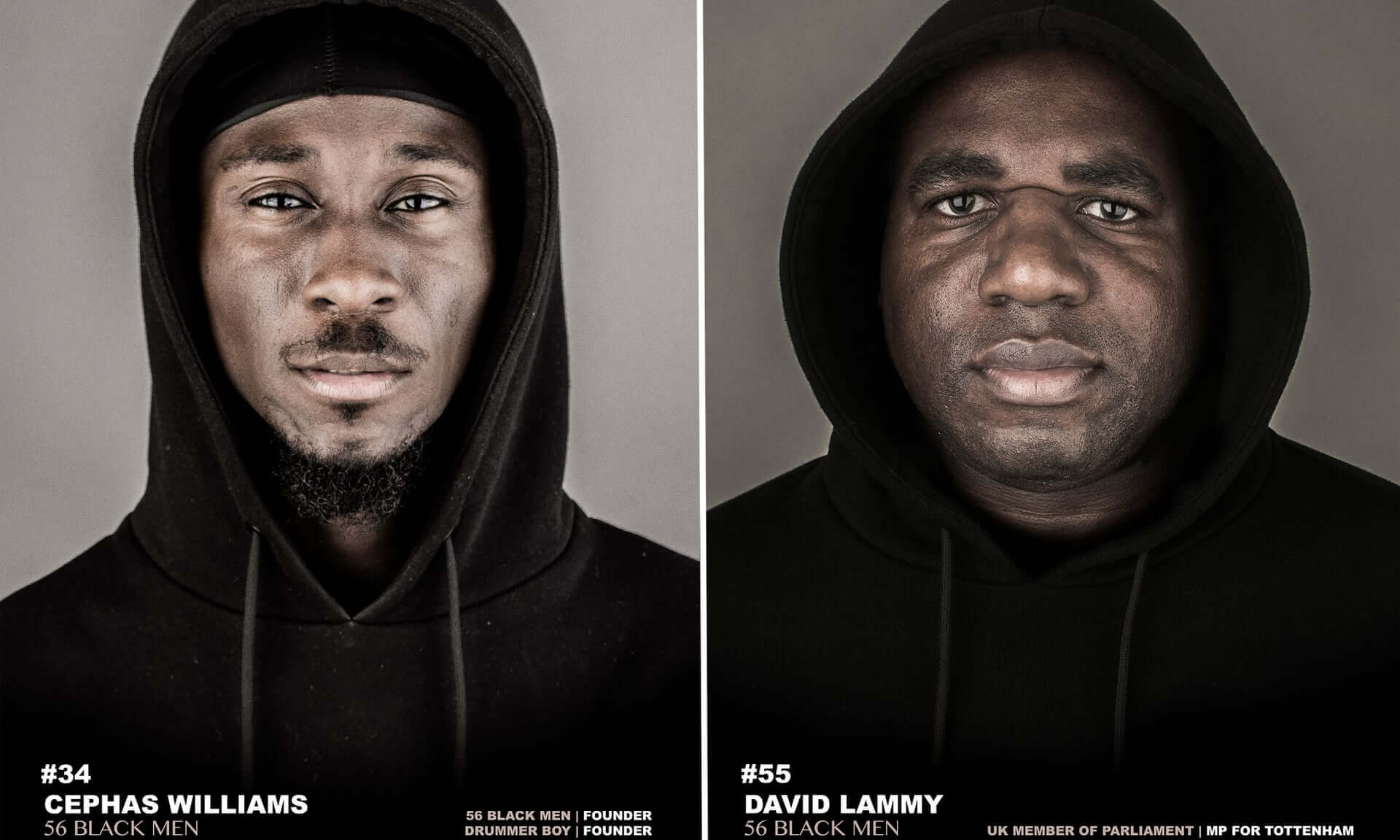
What do you see in this picture? Two black men in hoodies, yes?
What is the first impression that makes on you?
Today I’m going to talk about biases around gender and race. Sure, everyone reading this will say, I’m aware of bias and I’m not biased.
Well, sorry, but we all are, sometimes consciously and sometimes unconsciously. It is a lifelong journey to be aware of our biases, to acknowledge them, to address them.
So, as it is a lifelong journey, I’ll also give you a motivation beyond altruism and simple human decency to keep committed to the journey. A clue to that motivation is in the title of this post.
Black men in hoodies
First, back to that photo.
On the right is David Lammy, a UK MP and a brilliant mind and campaigner.
He is also featured in a project called 56 Black Men by the man on the left, Cephas Williams.
David recently wrote a powerful article on bias against black men called: “David Lammy on why there’s nothing scary about a black man in a hoodie“, in which he wrote about participating in the project:
“..it seeks to liberate black men from invisibility. Featuring powerful photographs of black men in hoodies, from all walks of life, the project doesn’t ask us to think about what is outside of the hood, but what is underneath it. The campaign features a spectrum of men from trainee surgeons to choreographers. Williams says: “This is generally the opposite of what society has been conditioned to expect of a black man and in some cases even influences how many black men view themselves and their ability.”
As the article begins, “Distrust of black men in hoodies is endemic in the UK“. Why is that?
Bias.
The noise a woman’s shoe makes
One of the most powerful and empirically evidenced stories I’ve come to know about bias is around the gender bias in auditioning for orchestras.
Women have always been greatly under-represented in major orchestras, but how could this be addressed?
Several decades ago, some orchestras started doing blind auditions, where the musician performed anonymously behind a screen, only their performance could be judged. Not their CV/resume, not their name, not their gender. The results of this were stunning in reducing gender bias, such that it is now the de facto standard for auditions in orchestras.
Reducing, I noted, not eliminating.
Why only reducing, not eliminating?
Have you heard of the TV reality show “The Voice”? The best part of that is the opening shows of the season when the celebrity judges have to have their backs turned to the singer walking onto the stage and performing.
I note that the singers walking onto the stage. Musicians auditioning for an orchestra behind a screen also have to walk on. Think about that. A woman dressing to play in an orchestra will typically wear shoes with heels.
The judges can hear the noise a woman’s shoe makes.
Bias.
Oh, at some stage someone recognised this and now the process involves musicians taking their shoes off before walking onto the stage.
For a detailed explanation of this, read: “How blind auditions help orchestras to eliminate gender bias“.
What are you risking due to your biases?
Now, hopefully, these two examples of race and gender bias help you recognise that bias is insidious as well as often unconscious, so can be hard to bring awareness to and then seek to eliminate.
At the start of this piece I said I would look to give you a motivation beyond altruism and simple human decency to keep committed to the journey.
So, an American business leader once taught me:
“everyone is tuned into the same radio station, WII-FM. What’s In It For Me”
Let’s assume people reading this are business leaders, so what is in it for them to commit to and invest in the lifelong journey to be aware of and seek to eliminate bias.
For today let me simply look at the commercial imperative and look at risk.
A key role for leaders is to assess and make choices around risk, but what if everyone around you has the same or similar views? Imagine the risks of conformist thinking, of lack of diverse thought.
Gosh, I write again and again on this site about the power of thinking differently.
WIthout diversity of thought you are putting yourself and your business at risk, so having this permeate throughout your business is absolutely an imperative for you to commit to and invest in so that you can assess and manage risk.
Diversity of thought reduces risk.
The game of business is largely about maximising return relative to risk
Ergo. Invest in diversity of thought and you will reduce risk and increase your net return
That, indeed, is your “WII-FM”
How to increase diversity of thought?
My definition of innovation is “doing things differently and doing different things”.
So, perhaps my definition of diverse thought can be distilled to simplicity as:
“thinking differently and thinking different things”
To have true diversity of thought requires numerous elements, including a culture where people are genuinely comfortable voicing opinions outside the norm. Often easier said than achieved, but that is a topic for another day.
For today, though, let us reflect back simply on racial and gender diversity. Businesses around the world are dominated by white men like me. We cannot, no matter how hard we try, think like women or black men (to name but two under-represented demographics in business and leadership).
Embrace diversity in hiring, developing and promoting across the spectrum. Do it because it is simply the right thing to do, and also do it as it will reduce the risks to your business through diversity of thought.
If you’d like to talk more about this and best practice I have observed and supported, I’d love to talk to you.
